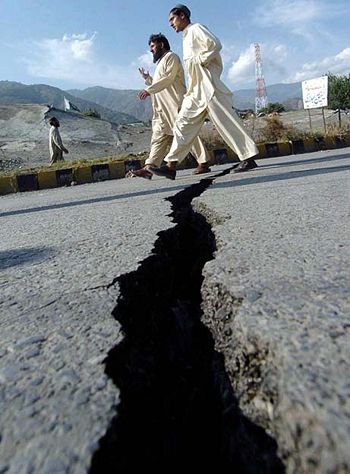Self-organized criticality and earthquakes: Difference between revisions
No edit summary |
No edit summary |
||
| Line 1: | Line 1: | ||
[[Image:eathquake1b.jpg|thumb|350px|right|Figure 1.|The result of an earthquake. Image from National Geographic]] | |||
In 1987 the team of Bak, Tang, and Weisenfeld presented a paper on "Self-organized Criticality" which hoped to provide a very simplified model to explain the complexity found in nature. Prior to this, many models describing complex systems had been developed however there was no general theory of complexity built on a strong mathematical foundation. The theory with which the team attempted in their paper explains the "self-organized critical state" by comparing it to that of a steep sand pile which emits avalanches of all sizes as more sand is added to the system. | |||
==sandpiles== | ==sandpiles== | ||
Revision as of 14:35, 21 April 2009
In 1987 the team of Bak, Tang, and Weisenfeld presented a paper on "Self-organized Criticality" which hoped to provide a very simplified model to explain the complexity found in nature. Prior to this, many models describing complex systems had been developed however there was no general theory of complexity built on a strong mathematical foundation. The theory with which the team attempted in their paper explains the "self-organized critical state" by comparing it to that of a steep sand pile which emits avalanches of all sizes as more sand is added to the system.
sandpiles
Sandpile Applet[1]
the gutenberg-richter law
sources
Self-Organized Criticality: Emergent Complex Behavior in Physical and Biological Systems. Cambridge Lecture Notes in Physics Part 10.
How Nature Works: The Science of Self-Organized Criticality. Per Bak.
Modeling Extinction. M.E.J. Newman, R.G. Palmer. Santa Fe Institute Studies in the Sciences of Complexity.
